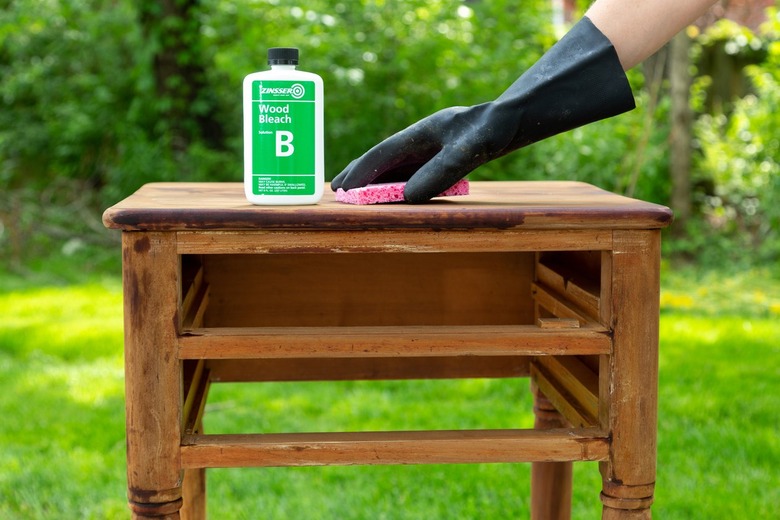Why Should I Use Steel Wool Between Coats Of Stain?
Beautifully finished wood adds a richness and warmth that no man-made material can rival. And it's a look you can achieve yourself with the right materials and technique. Stains come in different formulations and a full range of wood tones, and such finishes as varnish and polyurethane give your piece either a matte or glossy shine. Sanding is one of the keys to an excellent result, beginning with coarse-grit paper and ending with a steel-wool substitute or fine sandpaper between coats.
While sanding between coats of finish is standard, sanding between coats of stain is optional and typically is not done with oil stain. With water-based stain, the water raises the wood grain, and sanding between coats can lead to a smoother final finish.
The Right Tools for Sanding Between Coats of Stain
The Right Tools for Sanding Between Coats of Stain
Once your stain is mixed and ready to apply, assemble a selection of sandpaper ranging from very fine to very coarse grit. Use a natural-bristle brush for oil-based stains and finishes and a synthetic one for water-based stains and finishes. Mix some solvent into the stain to thin it, if you'd like, and make it easier to spread. For super-fine, between-coat sanding, use a non-rusting, non-flaking substitute for authentic steel wool to keep your finish free of steel particles and eventual rust stains. Alternatively, you can use 220- to 240-grit sandpaper.
Prepare the Surface
Prepare the Surface
Prepare the wood surface by sanding with sandpaper that's gritty enough to remove imperfections but no grittier than is necessary.
When the surface is even, sand the wood with increasingly finer sandpapers until the wood takes on a smooth, satiny finish.
Tip
Always sand the wood with the grain to avoid introducing scratches to the surface.
Why Sanding Between Coats of Stain is Useful
Why Sanding Between Coats of Stain is Useful
Sanding with a steel-wool substitute or fine sandpaper between coats of stain is useful for a few reasons. First, it evens out the finish from the previous coat, and it knocks down wood fibers that were raised by the water in the stain. In addition, it adds some "tooth" to the surface that helps the next coat of stain adhere and absorb better and more uniformly. Wipe the surface with tack cloth to remove dust before you begin the next coat of stain.
Finishing the Wood
Finishing the Wood
Follow the manufacturer's instructions for the finishing product you've chosen to protect your piece's surface. Sand the wood between coats with the steel wool substitute or fine sandpaper in the same way you sanded between coats of stain. This sanding serves the same purpose: It evens the finish and helps the next coat adhere better. Sand carefully, however, to avoid sanding through the finish and marring the stained surface.
